A native species in the same genus as the Shaggy Parasol. Large bulbous base, sliding ring, brightly oxidizes orange, then brown on cutting, particularly at the base of stem, smells pungent. Chlorophyllum species need high heat when cooking to prevent stomach upsets. Could be confused with the poisonous Green spored parasol but has white spores. Could be confused with a poisonous Amanita which also have white spores but do not oxidise bright orange on cutting. A similar look alike is Chlorophyllum brunneum. Though I have eaten C. nothorachodes it is relatively unknown. C .brunneum on the other hand is well documented as an edible occurring in many countries. These two species can be found growing together in Australia and can be differentiated by observing the bulb and the ring.
The ring on the left shows the view from below, (laying on the ground looking up at the ring) the inner ridge is the attachment point, so the ring is attached below. This is best understood by removing them.
Left-detail of double ridged ring,. Right-Young mushroom shows smooth bulbous base.
Observations made at the young stage are crucial as this mushroom takes on various appearances as it matures. The length of overcast weather, when the sun comes out and for how long are some of the obvious factors.
Ref. https://nature.berkeley.edu/brunslab/papers/vellinga2003_aust.pdf

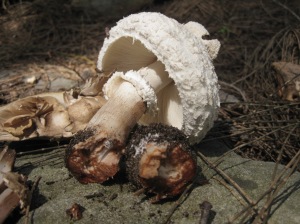
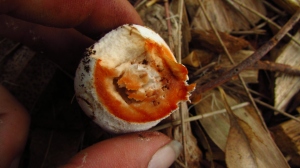
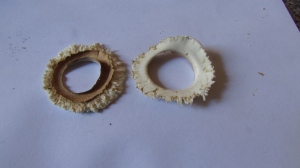
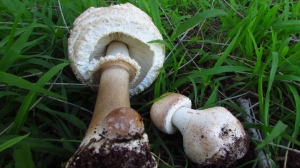
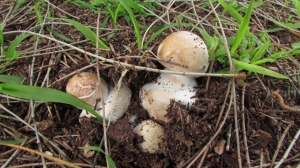
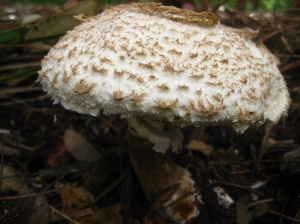
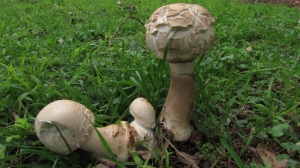
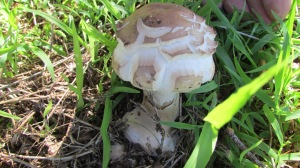
The scales on these appear paler than others I have seen. They seem to have been put into Chlorphyllum now. http://www.svims.ca/council/Chloro.htm
Someone contacted me recently who has huge quantities of these coming up but didn’t know what they were. They had thought they might be Agaricus augustus. Shows how easy it is to get it wrong if you don’t take the gill and spore colour into account.
Pingback: Chlorophyllum brunneum (Macrolepiota rachodes var. bohemica) | mushroaming
I found a large cluster of what I thought was Chlorophyllum molybdites in a public park in Sydney a few years ago. It matched all the criteria, but the spore print was white, so I was a bit perplexed. It was only when doing some research about Chlorophyllum nothorachodes I found in the same area that I found out about the native Chlorophyllum nothorachodes with white spores. Bingo!.
Also check out Chlorophyllum brunneum, often growing together differentiated by the bulb and ring. Chlorophyllum species are quite common in Sydney. C.brunneum is found in many countries and well documented.
Too true. There are often clusters of C. brunneum in the same area, but they seem to prefer congregating at the base of trees and in shaded areas whereas the C. nothorachodes I found were out in the open, in some grass, almost like a cluster of agarics. Nothorachodes seems to also grow much larger than brunneum.
Hi Jason, It’s Amy. Amazing site!! Come to our Forest and eat our fungi!
Hi Amy, let me know when the fungi are out..
Hello
Wondering if I can send you 1 or 2 pics of what I believe to be “Chlorophyllum nothorachodes” growing in my area of New Zealand. I have done a spore print which came up white also the gills are free and it bruises a brown-red colour.
Would be great to run it past someone who really knows their stuff before I come to my own conclusions. Don’t won’t to be to bold.
Thanks Guy.
Sure you can email me at jsunlau@gmail.com
C.brunneum is better documented and also occurs in New Zealand. Be great to here about the NZ mushroom seen. Cheers Jsun